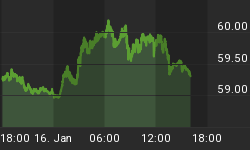Serendipity often plays a role when I am considering a blog post. In this case, I wasn't even planning a post but was updating old spreadsheets for current data to see how things have developed. In the past, I have documented how NYSE Composite volume has been falling fairly steadily since at least 2006. It is difficult to tell whether this is important or not, since some of this is due to the fact that more trading occurs off of the NYSE these days. Still, there was a significant drop-off in 2010 and 2011 and 2012 which seemed more than coincidental (2012 total volume was about half of the volume traded in 2008, in terms of shares, and probably lower than that in terms of volume).
In 2013, volume fell a small amount further. But I was interested to see that in 2014, NYSE volumes look to be just about exactly the same as they were in 2013 - for the first time in a long while, volumes have not declined.
But what was even more interesting to me was the pattern of volume over the course of the year. I put together the following chart to compare the rolling-20-trading-day volume for last year and this year.

You can easily see the increase in volume in the "taper tantrum" of May/June 2013, and the summer lull in both years. You can also see how volumes recovered in September and then fade into year end. But what stands out is how the summer was significantly quieter than in 2013, but since the end of September volumes have been quite high.
For fun, I decided to look at the data for 2006-2013 in its entirety (that's all the data that I have). For each day, I computed the share of the year's total volume and then averaged that across all eight years. By taking percentage of the total, I removed any tendency to overweight 2006's much higher volume compared to 2013...it was the pattern I was looking for. Then, I computed a rolling-20-day sum. The line in blue below is the percentage of the year's volume represented by any 20-day window ending on the day in question (since there are roughly 12.5 such windows in a year, we would expect 8% = 1/12.5 in a steady line if there was no seasonality). I then did the same thing for 2014 (but adjusting for the fact that we don't know the year's total volume yet).

Several things jump out as interesting. First is that there seems to be a general pattern that volumes generally decline after June. The summer volume swoon is mainly in August, there is a flurry of trading in September and early October, and then volume ebbs from there. Second, and more interesting at the moment, is that volumes in 2014 haven't picked up just compared to 2013, but are quite a bit higher than the norm, and even quite a bit higher than for most of the rest of this year! By contrast, in 2013 the pattern was fairly normal except for the spike around the taper tantrum.
What causes me to scratch my head is the implication. There is no clear cause I can think of that would trigger a rise in equity trading volumes since mid-September. The end of the Fed's taper was becoming clear, but I don't know why that would trigger higher equity volumes. There haven't been any unusual geopolitical events (at least, no more unusual than in any other year).
I am reluctant to declare this as yet another sign of a frothy and overbought equity market, with swelling participation at the highs. But I am open to the possibility.
You can follow me @inflation_guy!
Enduring Investments is a registered investment adviser that specializes in solving inflation-related problems. Fill out the contact form at http://www.EnduringInvestments.com/contact and we will send you our latest Quarterly Inflation Outlook. And if you make sure to put your physical mailing address in the "comment" section of the contact form, we will also send you a copy of Michael Ashton's book "Maestro, My Ass!"
















